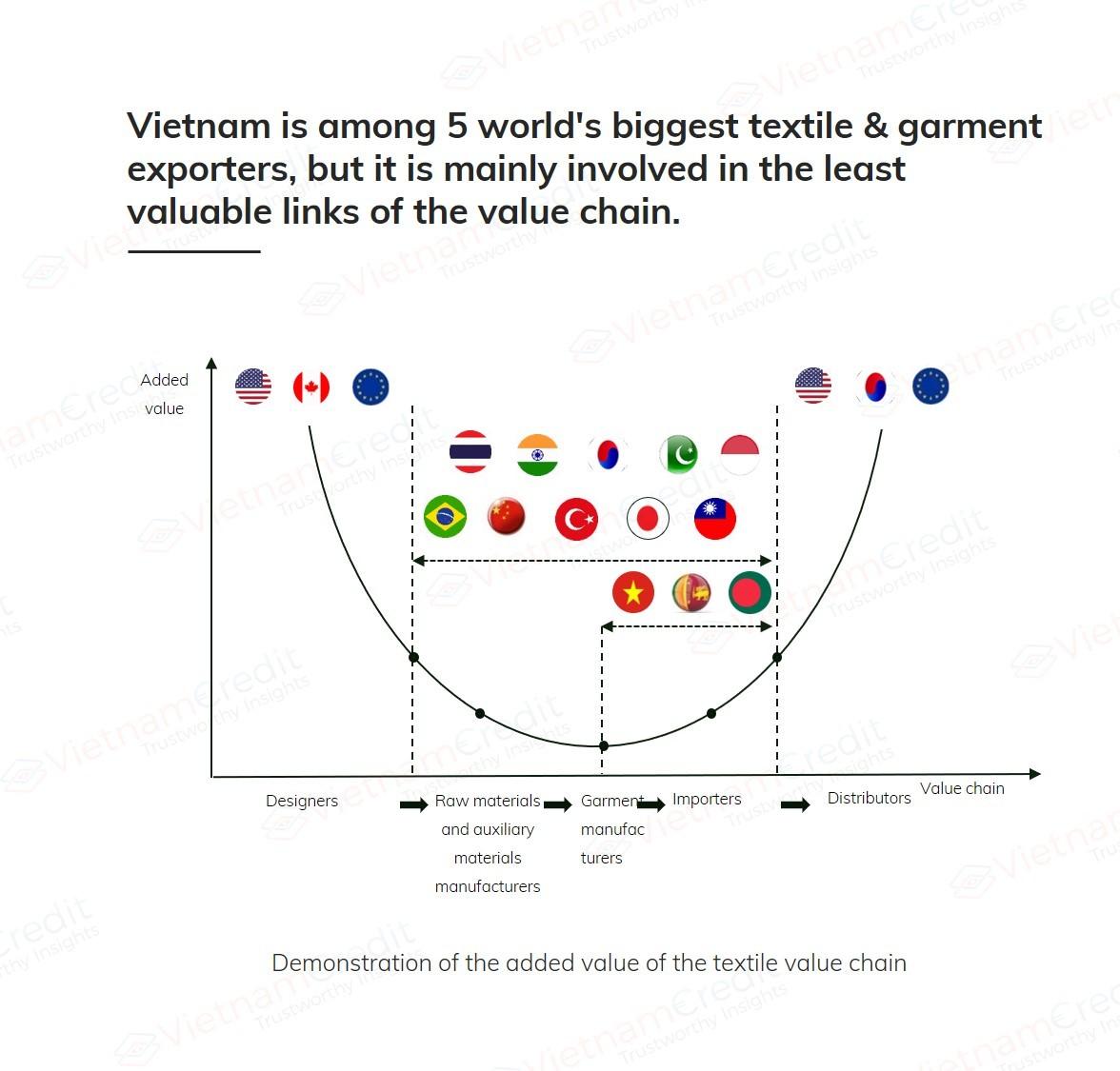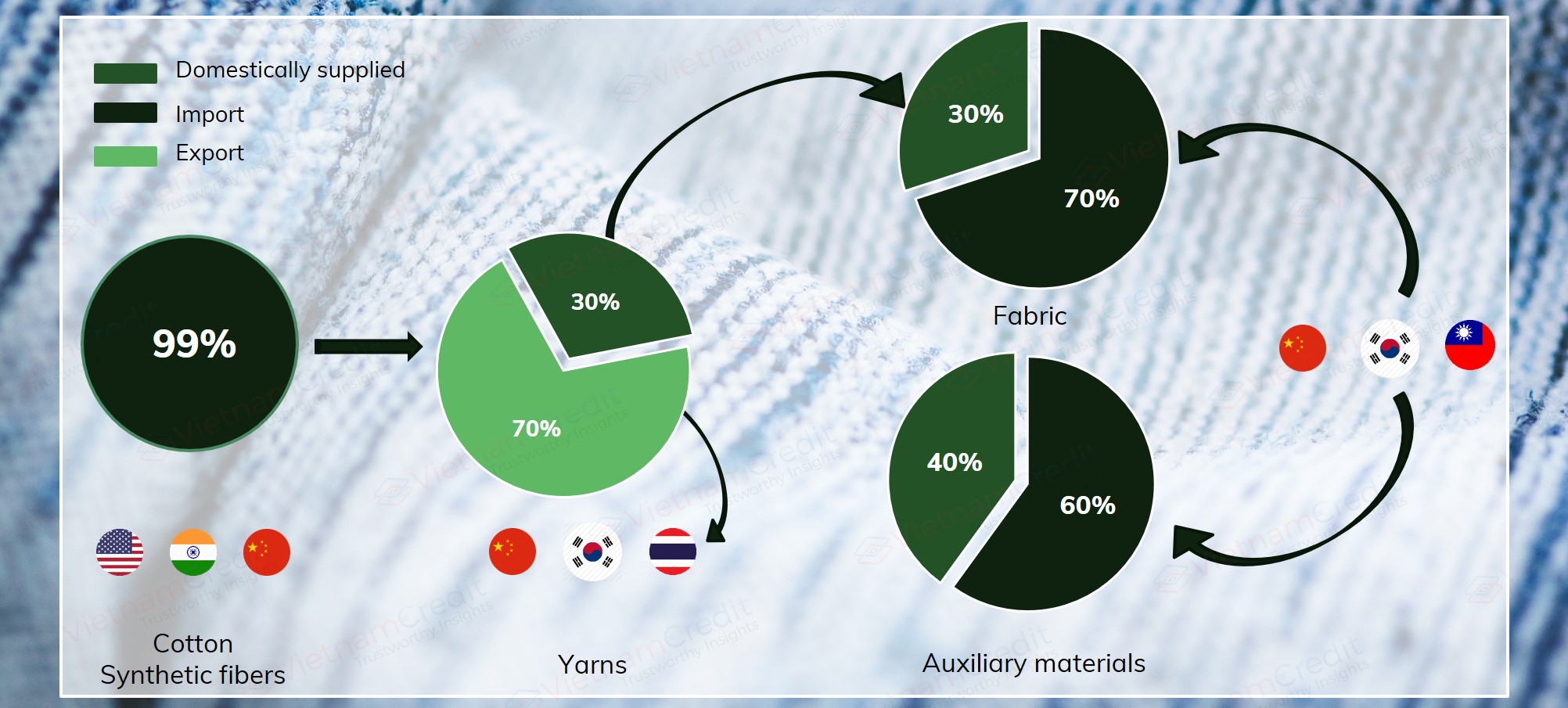In order to enjoy import tax rate of 0% when participating in FTAs, enterprises must guarantee origin of raw materials, which is a big challenge for Vietnam's textile and garment industry.
Raw materials mainly from China
Import tax on textiles and garments in major markets including the EU, Japan, Korea, Russia, and Canada is reduced to 0% as soon as FTAs come into effect or after a number of years according to the schedule. However, according to the “insiders”, the biggest inadequacy of Vietnam textile and apparel is the supply of raw materials.
Mr. Tran Thanh Hai - Deputy Director of Import and Export Department, Ministry of Industry and Trade acknowledged that Vietnam's textile and garment industry has faced many challenges in the context of integration. In order to boost exports to other members of FTAs, especially in large markets, textiles and garments must meet relatively strict rules of origin, from yarn or fabric, while the fabric dyeing industry has not been developed in Vietnam, and we still have to import raw materials to produce export goods.
Moreover, in the value chain of the textile industry, Vietnam only conducts processing which has low added value and high labor intensity, while domestic labor resources are limited. Statistics of the General Department of Customs show that the total import turnover of textile and garment materials in September 2019 reached over USD 1.82 billion.
In the first 9 months of 2019, imports of this item reached USD 18 billion. In which, import of cloth accounted for over USD 9.73 billion; import of raw materials and accessories was over USD 4.38 billion; 1.13 million tons of cotton were imported, worth USD 2.07 billion; import of fiber and yarn was nearly 820 thousand tons, equivalent to USD 1.81 billion...

Vietnam mainly imports textile and apparel materials from China, Korea, Taiwan, Japan, ASEAN and the United States. In particular, in the first 9 months of this year, import of cloth from China market was over 58%; that of raw materials and accessories, and fiber & yarn was up to 41.07% and 55.04% respectively; 65.77% of imported cotton was from the United States.
Mr. Vu Huy Dong - Chairman of the Board of Directors, General Director of DamSan Joint Stock Company said that every year Vietnam imports about USD 12 billion worth of cloth from China and exports to China about USD 3 - 3.5 billion worth of yarn. However, Vietnam also imports from China about more than USD 1 billion worth of fiber. Thus, the import and export between Vietnam and China in the field of textiles and garments is about USD 10 billion.
Representative of Viet Nam Industry and Trade Center - Ministry of Industry and Trade (VITIC) said that so far, the textile industry has grown rapidly, but the development has not been balanced. Apparel has experienced the fastest growth while the opposite was true for other fields such as spinning, weaving, dyeing and finishing. While the requirement of goods traceability has been made mandatory by many major import markets, the biggest bottleneck of Vietnam's textile and garment is the supply of raw and auxiliary materials.
Formation of supply chain
To proactively meet origin requirements, and minimize risks and challenges, Mr. Hong said that, although the localization rates do not meet the requirements of the agreements, but they we need to make the most of this rate.
Recently, domestic enterprises have focused on investing in the development of the first stages (yarn, weaving, dyeing), creating supply chains. However, according to Mr. Hong, it is not possible to respond to the request immediately. Foreign investment in weaving and dyeing only accounts for 8.3% of total foreign investment in textiles and apparel, while that in the garment sector accounts for more than 90%. Therefore, businesses need to proactively exploit domestic raw materials and accessories, or cooperate with ASEAN countries or FTAs members to complete the closed value chain from raw materials to production and distribution.
In addition, there should be policies to encourage businesses to invest in the first stages, especially the dyeing sector. It is proposed that provinces should create conditions for licensing investment dyeing projects with modern wastewater treatment technologies. China has strengths in fabric but it does not participate in CPTPP, which also poses difficulties for the textile industry. Mr. Hai said that if we cannot take advantage of FTAs, it is a huge waste, because we have an FTA "treasure" (Vietnam has joined a total of 16 FTAs).
On the other hand, small-scale businesses and manufacturers do not want to spare their profit for protecting the environment, which cannot create a sustainable development environment while the punishment on environmental destruction is too slight. Therefore, Vietnam needs to have strong sanctions on the environment, and strict management, which will force businesses to invest. On the other hand, the government, ministries and localities should have plans and support to encourage businesses to invest in the dyeing field. "With the current development of 4.0 technologies, nothing is impossible," Mr. Dong emphasized.
In order to take advantage of incentives through CO, businesses need to reorganize the production process, search for raw materials, and move investment locations. At the same time, they should also make the most out of the principles of "converting HS codes", then the "regional value content". The representative of the Import-Export Department also warned that Vietnam's textile and garment industry needs to be very vigilant with the risk of origin fraud in exports.
Preferential import tariffs within the framework of the GSP universal tariff preference system that some countries have for Vietnam may vary from 10-40% compared to MFN tariffs among WTO member countries. Therefore, goods from some bordering countries can be transferred to Vietnam, or simply processed before entering Vietnam to enjoy benefits.
























































